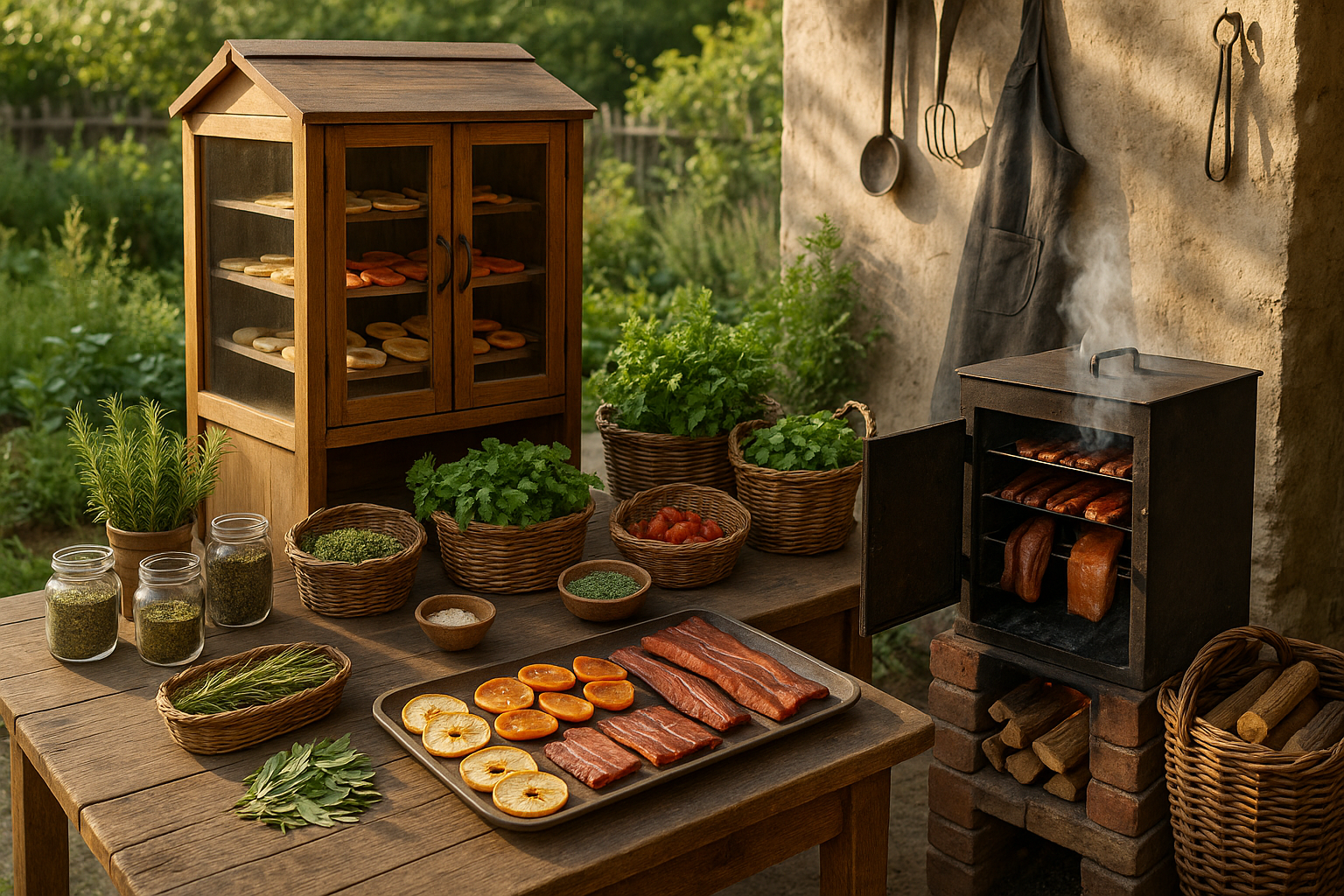In a world where modern conveniences are at our fingertips, the idea of returning to simpler, more traditional methods can be both intriguing and refreshing. Imagine crafting the most delicious, flavorful bread or yogurt you’ve ever tasted without the hum of an appliance or the glow of a digital display. Welcome to the art of cold fermentation—a timeless technique that not only enhances the taste and texture of your culinary creations but also offers a sustainable approach to food preparation. This method, which harnesses the natural power of cooler temperatures, allows you to unlock complex flavors and achieve remarkable results, all without the need for electricity. Whether you’re a seasoned chef or a curious home cook, mastering cold fermentation will revolutionize your kitchen adventures and deepen your appreciation for the natural processes that have sustained humanity for centuries. 🌾
Cold fermentation is a testament to the magic that can happen when patience meets nature. By allowing ingredients to ferment at cooler temperatures, typically between 5°C and 10°C (41°F and 50°F), you encourage the slow and steady development of flavors that are simply unattainable through rapid, high-temperature methods. This gradual fermentation process allows enzymes and microbes to work at their own pace, resulting in food that is not only delicious but also rich in nutrients and probiotics. From crusty artisan breads with complex, tangy notes to creamy, flavorful yogurts, the possibilities are as diverse as they are delectable. As we explore the intricacies of cold fermentation, you’ll discover how this method can be applied to various culinary endeavors, each offering a unique taste experience.
But what exactly makes cold fermentation such a game-changer? The answer lies in the science behind it. At lower temperatures, yeast and bacteria activity is slowed down, allowing for a more controlled and prolonged fermentation period. This not only enhances the flavor profile of the final product but also improves its texture and shelf life. The slow fermentation gives the dough time to develop gluten naturally, resulting in a superior crumb structure in bread. Similarly, in dairy products like yogurt and cheese, the extended fermentation period allows for the breakdown of lactose, making them easier to digest while also intensifying their taste. We’ll delve into the scientific principles that underpin cold fermentation, providing you with a solid understanding of why this method is worth embracing in your culinary repertoire.
Embarking on a cold fermentation journey is not just about enhancing flavors; it’s about embracing a more mindful approach to cooking. In a society driven by instant gratification, taking the time to allow ingredients to develop naturally can be a meditative process that reconnects us with the origins of our food. In this article, we’ll guide you through the steps of cold fermentation, offering practical tips and recipes that will help you incorporate this method into your kitchen routine. Whether you’re aiming to perfect the art of sourdough bread or experiment with homemade pickles, you’ll find inspiration and guidance to help you succeed. So, let’s chill out and discover how cold fermentation can transform your culinary creations into something truly extraordinary! 🥖🥒
Understanding Cold Fermentation
Cold fermentation is a fascinating and traditional technique that enhances the flavors and textures of various foods, particularly in baking. It involves allowing the dough or food to ferment at cooler temperatures, typically between 32°F and 55°F (0°C to 13°C). This slower fermentation process allows for more complex flavors to develop, as the yeast and bacteria have more time to work their magic. As a result, the end product often has a more nuanced and richer taste, along with a pleasant texture.
One of the primary benefits of cold fermentation is that it doesn’t require electricity. This makes it an ideal method for those looking to reduce their energy consumption or for people living in areas where electricity is unreliable or expensive. Cold fermentation can be done using natural refrigeration methods, such as storing the dough in a cool basement, cellar, or even outdoors in colder climates.
Another advantage of cold fermentation is that it improves the digestibility of the food. As the dough ferments slowly, the gluten network continues to develop, breaking down proteins that can be difficult for some people to digest. This process can result in baked goods that are easier on the stomach and more enjoyable for those with gluten sensitivities. Additionally, the lactic acid produced during fermentation helps preserve the dough, extending its shelf life.
The Science Behind Cold Fermentation
The science of cold fermentation is rooted in the interactions between yeast, bacteria, and the dough’s ingredients. At cooler temperatures, yeast activity slows down, leading to a prolonged fermentation period. This slower pace allows the yeast to produce more organic acids and alcohols, which contribute to the distinct flavors of cold-fermented products.
Lactic acid bacteria (LAB) also play a crucial role in cold fermentation. These bacteria thrive in cooler environments and produce lactic acid, which enhances the dough’s flavor and texture. The LAB also competes with undesirable microorganisms, inhibiting their growth and improving the dough’s overall quality.
Temperature control is a key factor in successful cold fermentation. The right temperature range allows for optimal yeast and bacterial activity while preventing the growth of harmful pathogens. Maintaining this balance is essential for achieving the desired taste and texture in the final product.
Comparative Analysis: Cold Fermentation vs. Traditional Fermentation
AspectCold FermentationTraditional FermentationTemperature32°F to 55°F (0°C to 13°C)70°F to 85°F (21°C to 29°C)Time12 to 48 hours or more1 to 3 hoursFlavor ComplexityHigher, with more nuanced flavorsLess complex, more straightforward flavorsEnergy UsageNo electricity requiredTypically requires electricity for proofingDigestibilityImproved, due to protein breakdownStandard, less protein breakdown
Practical Tips for Cold Fermentation at Home
If you’re interested in trying cold fermentation at home, there are several practical tips to keep in mind to ensure delicious results. First, it’s essential to select the right environment for your fermentation process. A cool basement, unheated room, or refrigerator can serve as excellent locations for cold fermentation. If you live in a colder climate, utilizing natural outdoor temperatures can also be an effective method.
When preparing your dough, using high-quality ingredients will enhance the flavor of the final product. Opt for organic flour, as it tends to have a better flavor profile and nutritional content. Additionally, consider incorporating whole grains or alternative flours to add more complexity to the taste. Experimenting with different types of yeast or sourdough starters can also yield interesting flavor variations.
Timing is another crucial factor in successful cold fermentation. The process can take anywhere from 12 to 48 hours or more, depending on the recipe and desired outcome. It’s important to monitor the dough’s progress, looking for signs of fermentation such as increased volume, bubbles, and a pleasant aroma. If you’re new to cold fermentation, it’s a good idea to keep a detailed record of your experiments, noting the temperature, time, and ingredient variations to refine your technique.
Step-by-Step Guide: Cold Fermentation Pizza Dough
One popular application of cold fermentation is in pizza dough preparation. Follow this step-by-step guide to create a delicious pizza dough using cold fermentation:
- Mix the Ingredients: In a large bowl, combine flour, water, yeast, and salt. Mix until a rough dough forms.
- Knead the Dough: Transfer the dough to a lightly floured surface and knead for about 10 minutes until smooth and elastic.
- Initial Fermentation: Place the dough in a lightly oiled bowl, cover, and let it rest at room temperature for 1 hour.
- Cold Fermentation: Transfer the bowl to a cool location (or refrigerator) and let the dough ferment for 24 to 48 hours.
- Preheat and Shape: Remove the dough from the refrigerator, let it warm to room temperature, then shape it into a pizza base.
- Bake: Add your favorite toppings and bake in a preheated oven at high heat until the crust is golden brown.
Watch this video for a visual guide on cold fermentation pizza dough: “Cold Fermented Pizza Dough Recipe” by Joshua Weissman.
Exploring Non-Bread Applications of Cold Fermentation
While cold fermentation is commonly associated with bread and pizza dough, its applications extend beyond baked goods. This technique can also be used to create a variety of fermented foods and beverages, each with its unique flavors and textures. For example, cold-fermented pickles are a delightful treat that offers a refreshing, tangy taste with a satisfying crunch.
To make cold-fermented pickles, start by selecting fresh cucumbers and a combination of spices, such as dill, garlic, and peppercorns. Submerge the cucumbers in a saltwater brine, then place them in a cool environment for several days to weeks, depending on your taste preference. The result is a deliciously crisp pickle with a depth of flavor that can’t be achieved through quick-pickling methods.
Another popular cold-fermented product is sauerkraut, which involves fermenting finely shredded cabbage. The cold fermentation process allows beneficial bacteria to thrive, producing lactic acid that preserves the cabbage and imparts a tangy, slightly sour flavor. Sauerkraut is a versatile ingredient that can be used in sandwiches, salads, or as a flavorful side dish.
Health Benefits of Cold Fermented Foods
Cold-fermented foods offer numerous health benefits, primarily due to the presence of probiotics—live bacteria that promote a healthy gut microbiome. Consuming these foods can improve digestion, boost the immune system, and enhance nutrient absorption. Additionally, cold fermentation can increase the bioavailability of certain nutrients, making them more accessible to the body.
- Improved Gut Health: The probiotics found in cold-fermented foods support a balanced gut microbiome, aiding in digestion and reducing bloating.
- Enhanced Nutrient Absorption: The fermentation process breaks down complex compounds, making it easier for the body to absorb essential vitamins and minerals.
- Immune System Support: A healthy gut microbiome is linked to a stronger immune system, helping to protect against infections and illnesses.
- Increased Shelf Life: Cold fermentation naturally preserves foods, extending their shelf life without the need for artificial preservatives.

Conclusion
As we conclude our journey through cold fermentation mastery, it’s clear that this process is as much an art as it is a science. By maintaining low temperatures, fermenters slow microbial activity, allowing complex flavors to develop naturally while preserving nutrients and freshness. Clay vessels, glass jars, and other breathable containers enhance the process by stabilizing humidity and temperature for consistent results.
The true mastery of cold fermentation lies in patience, precision, and respect for nature’s pace. 🌿💫 Whether crafting kimchi, sauerkraut, or pickled vegetables, every batch reflects the delicate balance between environment, microbes, and craftsmanship. Ultimately, chilling out with cold fermentation is more than a preservation method — it’s a mindful practice that connects us to tradition, sustainability, and the slow beauty of natural transformation.




